Observed Characteristics:
Color:
- orange
Morphology:
- encrusting
- papillated
Consistency:
- tough
Locations:
- Bahamas
- Colombia
Species Description and Notes
Description: Excavating sponge that often encrusts partially or completely the excavated substratum. In the Bahamas we have seen it as a thick, bright or dark orange encrustation, up to about 10-20 cm in diameter, with scattered oscules, some reaching up to 1 cm in diameter, usually with a conical tissue collar. Often part or the entire surface is colonized by whitish zoanthids. At Santa Marta, Colombia, it may occur as groups of patches of tissue with ragged edges, some of them with oscules, or more typical groups of inhalant (with pores) and exhalant (with oscules) papillae, up to 1-2 cm in diameter. Excavating tissue is also orange, filling relatively small (ca. 1 mm) but numerous galleries. Consistency of the external tissue is leathery, softer inside. Megasclere spicules are tylostyles, slightly curved, with drop-shaped to irregular heads and narrow and smooth, pointed ends, 150-350 µm long by 5-10 µm wide; the heads are 6.2-14.8 µm wide by 7.2-17.3 µm long. Microsclere spicules are stout spirasters, having 2-3 narrow turns, 9.5-43 µm long, with a shaft up to about 5-6 µm thick. Spines are thick and conical.
Notes: This species lives exposed, in shallow to deep reef habitats. Entirely encrusting specimens could be confused with co-occurring encrusting Cliona delitrix Pang, 1973, also pictured here, which is more brightly colored (scarlet red) and shows elevated inhalant papillae over the encrusting portions of the tissue, and the oscules are usually much larger and deep, and with a much taller collar. Also could be confused with Cliona varians (Duchassaing & Michelotti, 1864), pictured here, which is more yellowish, and is distinguished by the larger tylostyles and more slender, often c-shaped spirasters. The stout spirasters of C. dioryssa are reminiscent of the non-excavating related genus Spirastrella. This led original author (de Laubenfels, 1950) to include it within that genus, but later Rützler (1974) confirmed its excavating capabilities and transferred it to Cliona. In previous editions of this Guide we had named this species Cliona sp.-“orange crust”, noting its similarities with C. dioryssa, and we confirmed it after closer examination of additional material, especially a specimen that Klaus Rützler himself had collected and identified at Santa Marta, Colombia. One of our specimens from the Bahamas (# 57) was used in a phylogenetic study, and its nucleotide sequences of nuclear ribosomal DNA internal transcribed spacer ITS1 showed it to be related but distinct from both C. varians and C. delitrix (Escobar et al., 2012).
Author Reference: de Laubenfels, 1950
Link: World Porifera Database
Tissue and Spicule Images
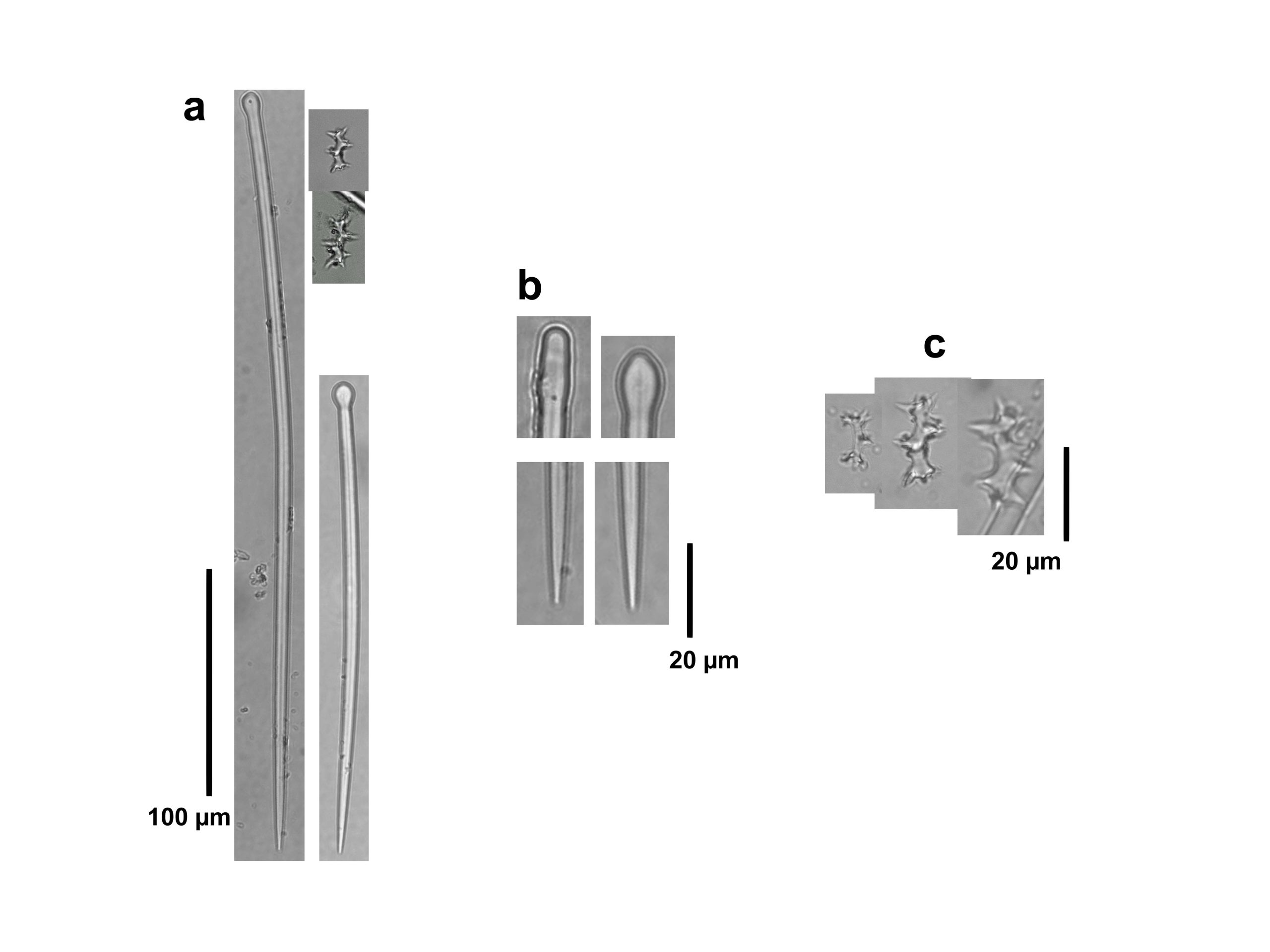
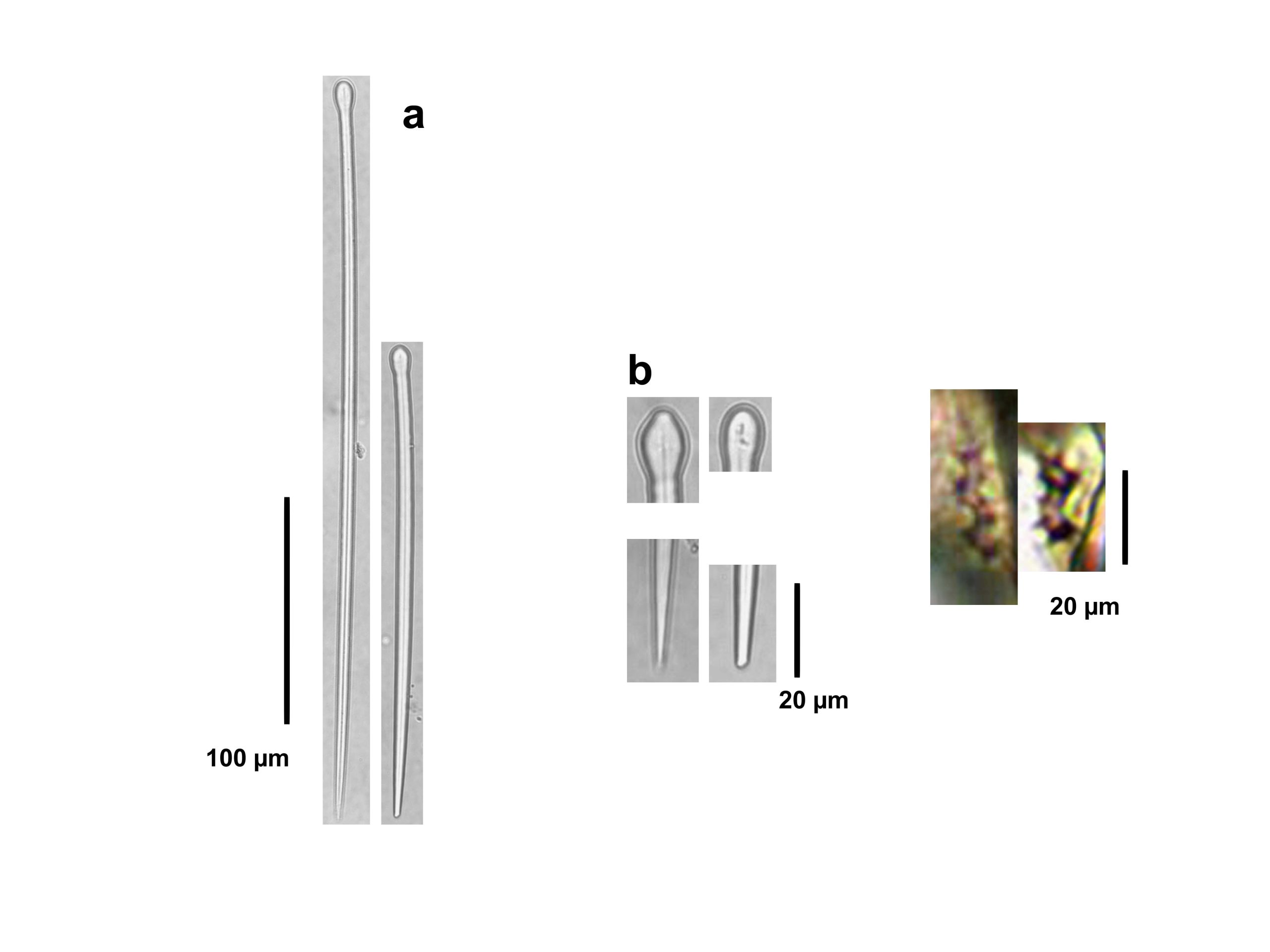
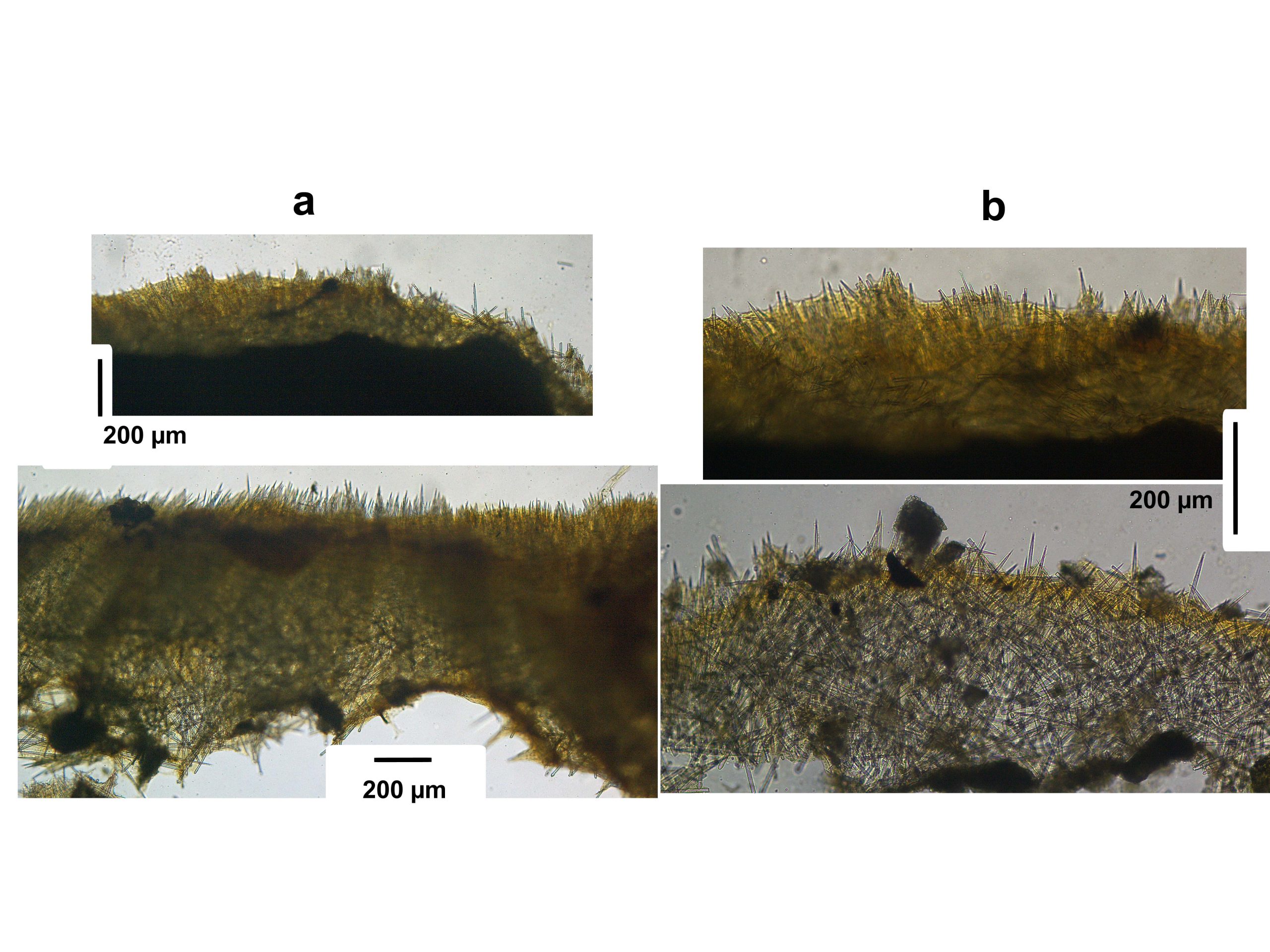
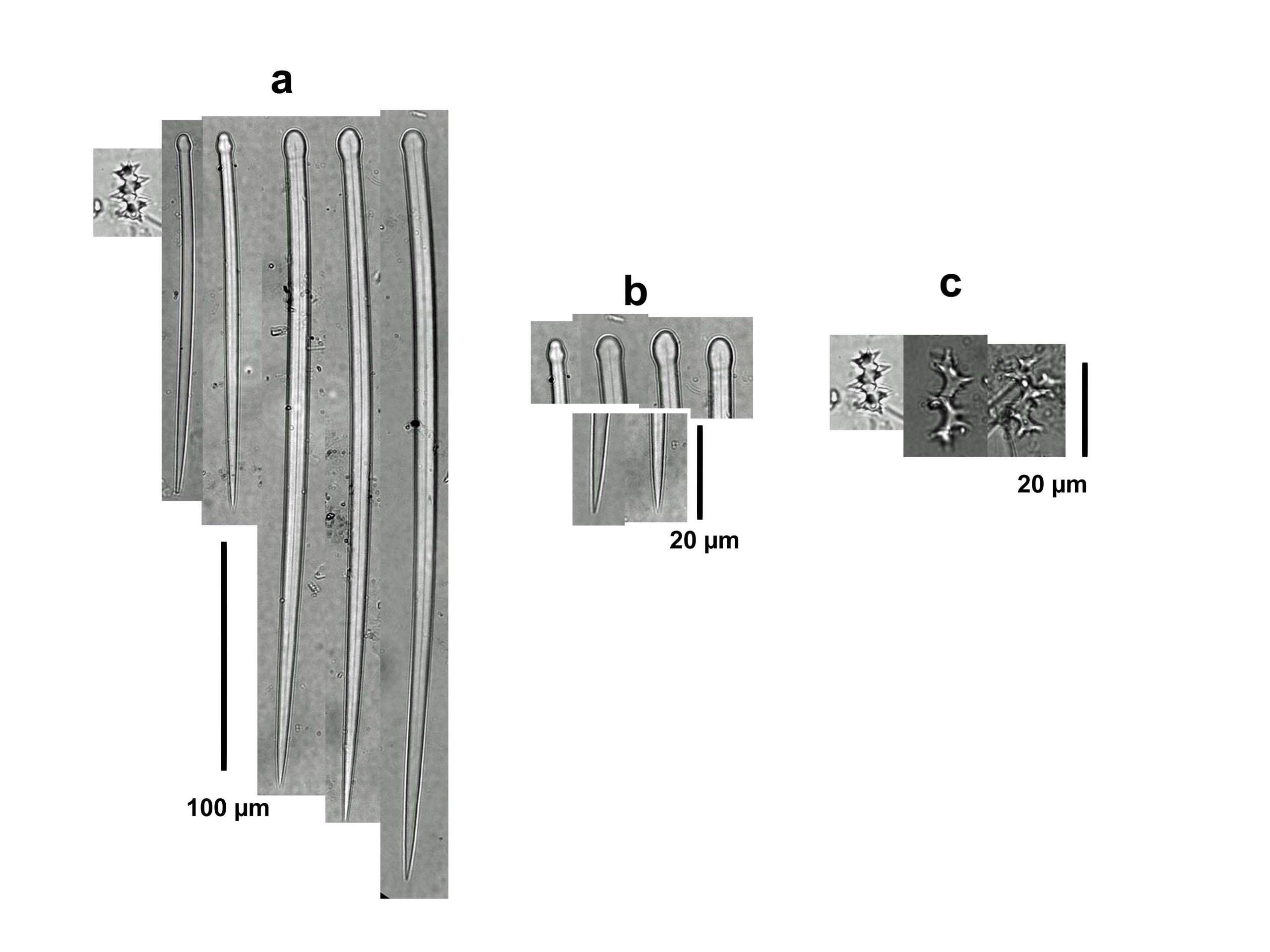
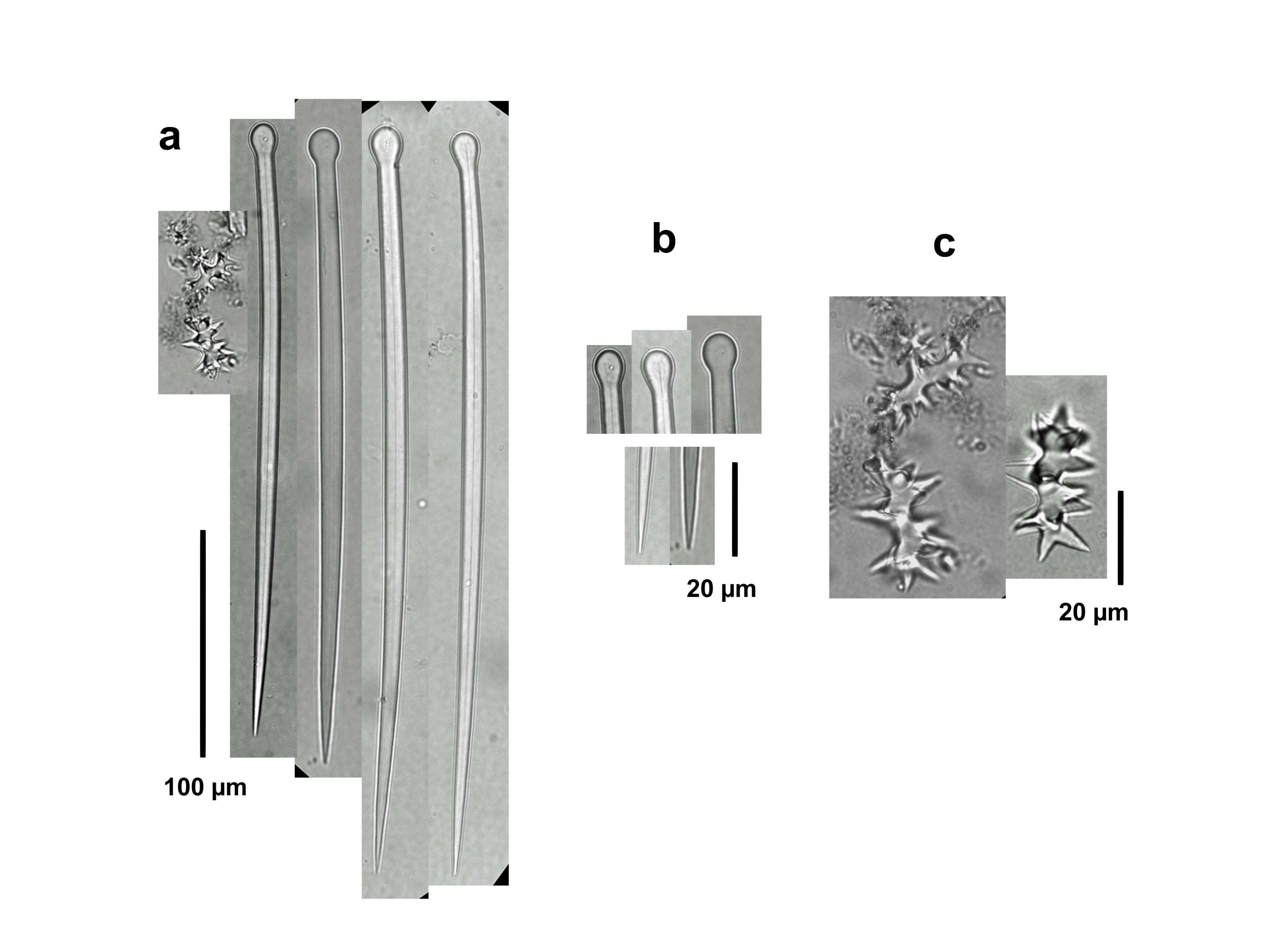
Images
dioryssa
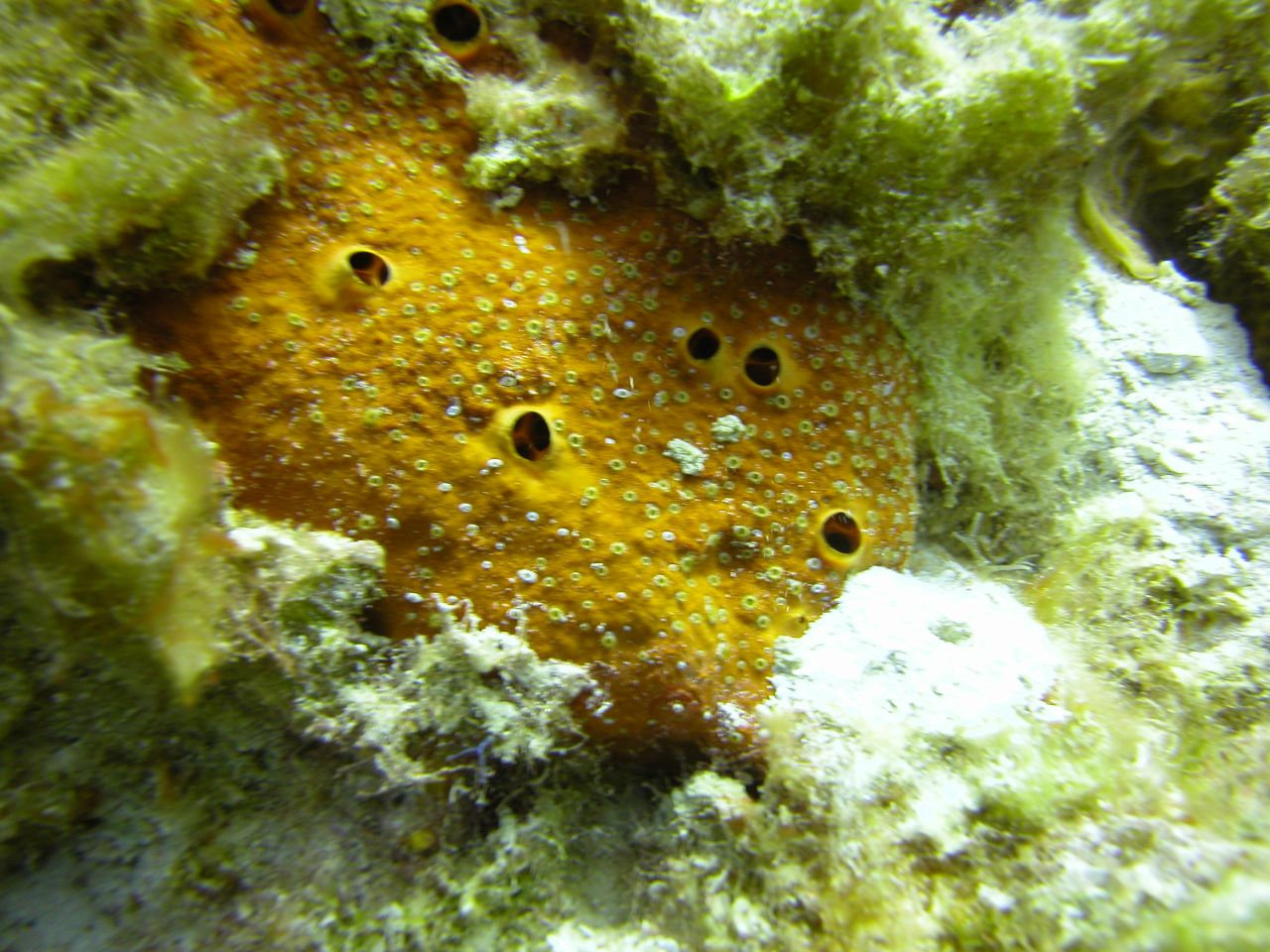
- Location: Stirrups Cays, N Berry Islands, Bahamas
- Photographer: Sven Zea
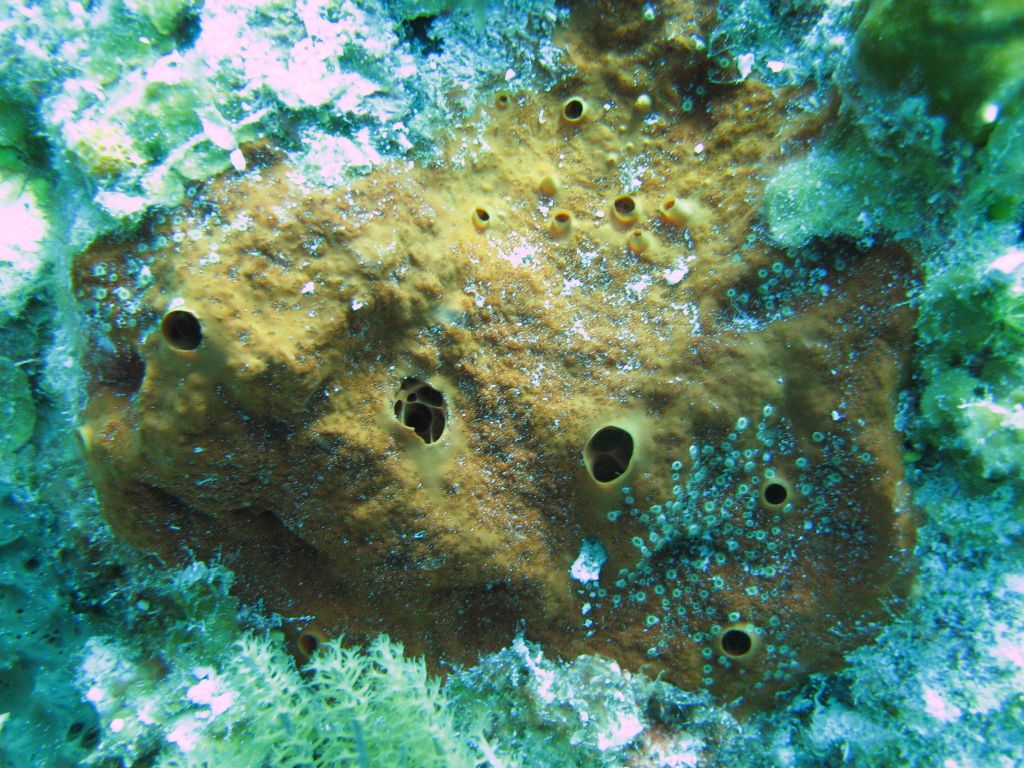
- Location: Stirrups Cays, N Berry Islands, Bahamas
- Photographer: Sven Zea